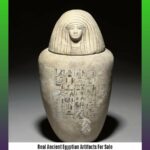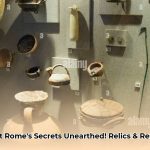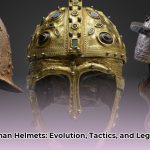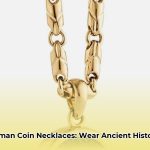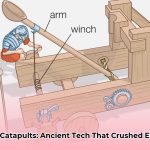Have you ever imagined holding a piece of history in your hands, a tangible link to an empire that shaped Western civilization? Ancient Roman coin necklaces offer precisely that: they are not merely jewelry, but wearable artifacts, whispering tales of emperors, legions, and daily life from millennia past. Their enduring allure captivates historians, collectors, and fashion enthusiasts alike. Yet, embarking on the journey to acquire one of these unique treasures demands a discerning eye and a solid understanding of authenticity, market dynamics, and meticulous preservation. This comprehensive guide will empower you with the essential knowledge to identify genuine pieces, navigate the vibrant marketplace, and safeguard your historical investment for generations to come. For more history related jewelry, check out this source.
The Enduring Allure: Why Ancient Roman Coins Captivate
Why do these ancient Roman coin necklaces exert such a powerful pull on people across centuries? The fascination stems from a potent blend of deep historical resonance, intrinsic artistic beauty, and the profound personal connection they foster. Imagine wearing a coin minted during the reign of Augustus, the very founder of the Roman Empire, or a denarius that circulated during the Pax Romana. Each coin is a microcosm of history, a direct tactile link to:
- Monumental Empires and Legendary Figures: From the stoic profiles of emperors like Marcus Aurelius, celebrated philosophers, to the formidable busts of military leaders such as Hadrian, these coins immortalize the titans who shaped an empire spanning continents. They depict deities, grand architectural achievements, and pivotal historical events.
- Wearable Art and Craftsmanship: Beyond their historical weight, these coins are masterworks of miniature art. Meticulously crafted by skilled artisans, their intricate details, symbolic imagery, and subtle wear patterns narrate a unique story etched in ancient metal. The aged patina, often a rich green or earthy brown for bronze, or a soft gray for silver, enhances their antique charm.
- Tangible Connection to the Past: Unlike a book or a monument observed from afar, an ancient Roman coin can be worn, touched, and experienced intimately. It offers a unique opportunity to own a verified, authentic fragment of a bygone era, carrying the energy and history of the very hands that once held it. This direct, personal connection to antiquity is what truly sets Roman coin jewelry apart.
Understanding Authenticity: A Buyer’s Imperative for Genuine Roman Coins
When venturing into the world of ancient Roman coin jewelry, authenticity is paramount. It’s not just about aesthetics; it’s about owning a verified, ethical piece of human history. Therefore, purchasing from demonstrably reputable dealers is critically important to ensure your investment holds genuine historical, cultural, and financial value.
Crucial Steps for Verifying Authenticity:
- Prioritize Trustworthy Dealers and Numismatists: Always opt for sellers who specialize in ancient artifacts and possess a strong reputation within the numismatic community. Reputable dealers provide clear, comprehensive return policies, robust authenticity guarantees (often lifetime), and are transparent about their sourcing. Membership in professional numismatic associations (e.g., American Numismatic Association) can also be a strong indicator of legitimacy.
- Conduct Thorough Research and Due Diligence: Arm yourself with knowledge about Roman coinage. Understand the historical context of the specific coin type you’re interested in, including the emperor, the period of issue (e.g., Roman Republic, Early Empire, Late Empire), the mint where it was struck, and the typical designs for that era. Learning to distinguish between authentic ancient artifacts and modern replicas, counterfeits, or even “fantasy pieces” is essential, as these differences drastically impact value and historical integrity. Consult reliable numismatic references and online databases.
- Examine Coin Characteristics Meticulously:
- Weight and Material: Roman coins were primarily minted from bronze (including copper and orichalcum), silver (like the ubiquitous Denarius), or gold (such as the prestigious Aureus). Verify that the coin’s exact weight and diameter align with known historical standards for its specific type and period. This often requires a precise digital scale and calipers. Be aware that ancient minting was not always exact, but significant deviations are red flags.
- Wear Patterns: Authentic coins will exhibit natural, uneven wear consistent with centuries of handling, circulation, and burial. This wear should be subtle, gradual, and reflect normal use. Be highly suspicious of coins that appear unnaturally pristine, exhibit uniform or artificial wear patterns, or show signs of modern tooling to create “age.”
- Design Details and Die Matches: Scrutinize the inscriptions, imperial portraits, and reverse imagery. Genuine coins typically feature sharp, well-defined features, even after degradation, and the style should be consistent with known Roman artistic conventions of that period. Replicas may appear blurred, crude, or have an unnatural “mushy” quality. Advanced collectors often look for “die matches”—coins struck from the same die pair—to confirm authenticity.
- Patina: This natural protective layer, formed over centuries of interaction with the environment, indicates a coin’s true age and history. It’s organic, often enhancing a coin’s beauty and value. Be wary of artificially induced patinas, which may have an unnatural color, texture, or even fluoresce under UV light, signaling a fake.
- Confirm Provenance and Ethical Sourcing: Seek dealers who can provide detailed documentation regarding the coin’s history, including its origin, any known previous ownership (“chain of custody”), and relevant historical context. While a complete provenance is rare for all ancient coins, an ethical dealer prioritizes transparent sourcing and avoids artifacts without clear, legal origins, especially those potentially linked to looting or illegal excavation. This commitment to ethical acquisition adds a vital layer of assurance and peace of mind.
- Utilize Advanced Examination Techniques:
- Magnification: Employ a jeweler’s loupe or a high-quality magnifying glass (10x or higher) to closely examine the coin’s surface. This can reveal subtle details, microscopic scratches, or signs of modern tooling not visible to the naked eye.
- UV Light: A UV-A or UV-C light source can help check for alterations, artificial patinas, or repairs, as various materials used in fakes or restorations may fluoresce differently than natural ancient metal.
- Specific Gravity Test: For metallic coins, a specific gravity test can help determine the density of the metal, comparing it to known densities of ancient alloys. This is particularly useful for detecting modern base metal forgeries attempting to pass as silver or gold.
- Consider Professional Appraisals: For high-value or exceptionally rare pieces, securing a professional appraisal from a qualified, independent numismatist (an expert in coin study) is highly advisable. They possess the specialized knowledge, experience, and tools to provide a definitive, unbiased assessment of authenticity and market value.
Red Flags to Watch For in Replicas and Fakes:
- Uniform or “Tool-Mark” Wear: Predictable, consistent wear patterns across the entire surface, or visible marks from modern tools used to simulate age.
- Unusual Luster or Finish: A bright, unnatural shine, or an overly “clean” appearance inconsistent with the coin’s age.
- Incorrect Weight or Dimensions: A significant deviation from the known historical standards for the coin type.
- Suspiciously Low Prices: If an ancient coin, especially a rare or historically significant one, seems too inexpensive to be true, it almost certainly is. Authentic ancient coins, particularly those suitable for jewelry, hold significant value.
- Modern Casting Seams: Fakes often show subtle casting seams, bubbles, or irregularities in the metal surface not present in struck ancient coins.
Navigating the Market: Trends, Valuation, and Investment Factors
Understanding the market dynamics is essential when investing in ancient Roman coin necklaces. Their value is not static; it is influenced by a complex interplay of historical, aesthetic, and market-driven factors.
Key Factors Influencing Price and Desirability:
- Rarity and Scarcity: Coins that are genuinely rare, either due to limited original minting, low survival rates over millennia, or unique historical circumstances, naturally command significantly higher prices. For example, specific imperial Aurei (gold coins) or rare Republican denarii can fetch substantial sums due to their scarcity.
- Historical Significance: Pieces linked to iconic emperors (such as Augustus, Nero, or Constantine the Great), empresses (e.g., Faustina the Younger, Julia Domna), or pivotal historical events (like military victories, building projects, or significant political shifts) carry considerably greater value. Iconic imperial portraits with strong artistic merit are highly sought after.
- Metal Type and Purity: The intrinsic value of the metal—gold, silver, or bronze—directly impacts the base price. Gold Aurei are generally the most valuable, followed by silver Denarii, and then bronze coins like Sestertii, Dupondii, and Asses. The purity of the metal in antiquity also plays a role.
- Condition and Preservation: The coin’s overall state of preservation is a critical determinant of its worth. Well-preserved coins with clear details, legible inscriptions, sharp portraits, and intact, attractive patinas are exponentially more valuable than those that are heavily worn, damaged, corroded (e.g., by bronze disease), or poorly centered during striking. Numismatic grading standards (e.g., Fine, Very Fine, Extremely Fine) are used to assess condition.
- Aesthetic Appeal (“Eye Appeal”): Beyond technical condition, a coin’s “eye appeal”—its overall visual attractiveness, centering, strike quality, and patina—significantly influences its market desirability and price. A well-struck coin with a pleasing, natural patina will always fetch more than a technically similar coin that is dull or less visually appealing.
- Bezel Design and Craftsmanship: An expertly crafted, protective, and aesthetically pleasing bezel (the custom setting around the coin) can enhance both the visual appeal and the overall perceived value of the necklace. A good bezel preserves the coin without obscuring its key features.
- Provenance and Ethical Acquisition: As mentioned, a verifiable history of ownership and a clear, ethical sourcing pathway adds significant confidence and value, particularly in an increasingly conscious market.
Price variations are common across different online marketplaces, auction houses, and private dealers, reflecting varying overheads, dealer specializations, and target audiences. The market is propelled by a fascinating blend of historical significance, numismatic rarity, and sheer aesthetic beauty, often resulting in high demand for specific imperial portraits, historically resonant themes, or particular coin types. Staying informed about current market trends, understanding these pricing factors, and following reputable auction results are crucial for making judicious purchasing and investment decisions. The demand for tangible history continues to grow, making ancient Roman coin jewelry a unique and often appreciating asset.
Choosing Your Roman Coin Necklace: Styles, Settings, and Personal Expression
The bezel, which acts as the custom frame for the ancient coin, profoundly influences the necklace’s overall aesthetic, the coin’s security, and its long-term preservation. It’s not merely a holder; it’s an integral part of the design that can either enhance or detract from the coin’s historical narrative. When selecting your necklace, consider various metal options, chain lengths, and overall design elements to find a piece that truly resonates with your personal style and intended use.
Types of Bezel Settings for Ancient Coins:
- Full Bezels: This popular and highly protective setting completely encircles the coin’s edge. It provides maximum security for the ancient artifact, safeguarding it from accidental knocks, scratches, and environmental exposure. This style creates a robust “fortress” for your coin, ideal for daily wear or situations where durability is paramount. While it slightly obscures the edge, it ensures the coin remains pristine.
- Open or Prong Settings: Utilizing small, strategically placed metal prongs or partial frames, this style allows more of the coin’s surface, including its edge, to be visible. This can be aesthetically pleasing for coins with intricate edge details or if you desire a more minimalist look. However, it offers less protection compared to a full bezel and can leave the coin more vulnerable to accidental damage, dislodgment, or direct contact that can cause wear or corrosion. This style requires more careful handling.
- Custom Designer Bezels: Many jewelers create unique, bespoke bezels that incorporate artistic elements, additional gemstones, or intricate metalwork that complements the coin’s design. These can elevate the piece to high art but should always prioritize the coin’s preservation and avoid any methods that permanently alter or damage the ancient artifact.
The ideal bezel style depends on your lifestyle, your desired level of coin visibility, and your priority for protection versus aesthetic exposure.
Metal Options and Aesthetic Harmony:
The choice of metal for the bezel and accompanying chain significantly impacts the necklace’s overall value, visual appeal, and historical resonance:
- Gold (e.g., 14k, 18k, 22k): Imparts a sense of timeless luxury, prestige, and warmth. Gold beautifully enhances the richness of a bronze or silver coin’s patina and conveys an undisputed elegance. It is durable and highly resistant to tarnish, making it an excellent choice for preserving the coin.
- Silver (e.g., Sterling Silver, Fine Silver): Offers a more classic, understated, and often antique feel, harmonizing beautifully with a coin’s original patina and historical character. Silver can provide a striking contrast or a complementary tone, depending on the coin’s metal. While silver can tarnish, it is easily polished (though care must be taken not to polish the coin itself).
- Platinum: While less common for ancient coin jewelry due to its cost and density, platinum offers exceptional durability and a sleek, modern aesthetic that contrasts sharply with the ancient coin. It is hypoallergenic and highly resistant to wear.
Consider the coin’s original metal (e.g., a silver denarius might look stunning in a silver bezel, while a bronze sestertius could be enhanced by gold) and your personal style when making this decision. Customization options for chain lengths, pendant designs (e.g., incorporating other ancient motifs), and the addition of accent stones are often available to ensure the piece perfectly complements your wardrobe and preferences. The objective is always to select a design that harmonizes with, rather than overshadows, the coin’s unique historical character.
Caring for Your Ancient Roman Coin Necklace: Proven Strategies for Preservation
Proper maintenance and careful handling are paramount to preserving both the aesthetic appeal and, more importantly, the irreplaceable historical value of your ancient Roman coin necklace for future generations. Delicate handling, thoughtful cleaning, and appropriate storage are critical for its longevity.
Essential Preservation and Care Steps:
- Handle With Utmost Care and Minimize Contact: Always avoid direct skin contact with the coin’s surface. The natural oils, acids, and salts from your skin can cause irreversible damage, accelerate corrosion, or leave unsightly fingerprints over time. When handling, always hold the necklace by its bezel or chain, or wear lint-free cotton gloves.
- Gentle Initial Cleaning for Dirt, Not Patina: When you first acquire a coin, especially if it was recently unearthed, resist the urge for aggressive cleaning. Begin with a gentle wash using only mild, pH-neutral soap (like pure castile soap) and distilled water. Employ a very soft brush (such as a soft toothbrush or artist’s brush) to carefully dislodge and remove only superficial dirt and loose debris from the surface. This delicate approach is crucial to preserve its historical integrity and inherent value. Never use abrasive cleaners, polishes, or harsh chemicals.
- The Olive Oil “Soak” Method for Stubborn Encapsulations: For tenacious dirt or encrustations, particularly on bronze or copper coins, soaking the coin in pure extra virgin olive oil can be an effective and gentle method to loosen grime over extended periods without harming the coin’s surface. Patience is key: allow the coin to soak for several days, weeks, or even months, periodically checking and very gently brushing with a soft wooden tool like a toothpick or a bamboo skewer to ease away loosened particles. The oil slowly permeates the dirt layer, softening it for removal.
- Mechanical Cleaning for Specific Metals (Bronze/Copper): For most bronze and copper coins, mechanical cleaning with soft wooden toothpicks, bamboo skewers, or specialized bronze brushes is often the preferred and safest method. Avoid metal tools, which can scratch the coin’s surface, mar its details, or damage the patina. Work slowly and meticulously under magnification, focusing on small areas to reveal details without causing irreversible damage.
- Patina Preservation is Paramount: Understand the critical difference between superficial dirt and genuine patina. Patina is the natural, often beautiful, protective layer (usually copper carbonates or oxides) formed over centuries, indicating a coin’s age and authentic journey. It is highly valued by collectors and enhances a coin’s aesthetic, historical, and financial appeal. Never use harsh cleaning methods, abrasive materials, or chemical dips that could strip away the natural patina. Doing so will permanently diminish the coin’s historical integrity and significantly reduce its value.
- Addressing Bronze Disease Immediately: Bronze disease (chlorine corrosion) is a destructive, progressive form of corrosion that appears as powdery, often bright green or blue-green, pustules or deposits on bronze and copper coins. It is highly contagious to other coins and can rapidly destroy a coin. Immediate action is crucial if observed. Isolate the affected coin. Treatment typically involves cleaning the affected area, followed by a chemical neutralization soak (e.g., in sodium sesquicarbonate solution) or repeated boiling in distilled water to leach out chlorides. After treatment, thoroughly dry and then seal the coin (e.g., with a microcrystalline wax like Renaissance Wax or an acrylic lacquer) to prevent recurrence. Consulting a professional conservator is highly recommended for severe cases.
- Choose Appropriate and Stable Storage: Proper storage is vital for long-term preservation. Avoid outdated PVC (polyvinyl chloride) flips or soft plastic bags, as PVC can leach chemicals that damage coins over time. Invest in archival-quality, non-PVC storage solutions such as Mylar flips, inert coin slabs, or custom-fitted jewelry boxes lined with tarnish-resistant materials. Store your necklace in a stable, humidity-controlled environment, away from direct sunlight, extreme temperature fluctuations, and corrosive fumes. Be cautious with certain fire-retardant safes, as they can sometimes trap moisture and contribute to bronze disease. For display, ensure the setting is secure and the environment is controlled.
Different coin metals and their specific conditions require distinct cleaning and preservation approaches. While bronze and copper typically respond well to careful mechanical methods, silver coins may benefit from very cautious chemical methods (e.g., diluted ammonia, used sparingly and with extreme caution, followed by thorough rinsing), but professional advice is always best. Gold coins are generally the most stable and require only gentle cleaning with soap and distilled water. The overarching goal is always to strike a delicate balance between preserving the coin’s presentable appearance and maintaining its irreplaceable historical integrity.
Navigating the Marketplace: A Review of Reputable Online Retailers and Designers
When considering where to purchase your ancient Roman coin necklace, choosing reputable online retailers and jewelry designers is paramount. These platforms typically provide strong authenticity guarantees, offer diverse selections of coins and settings, and prioritize excellent customer service. Ethical sourcing and transparent provenances are hallmarks of trustworthy vendors.
Here’s a comparison of several reputable options, based on common factors observed in the market and inferred from their offerings:
| Retailer | Authenticity Guarantee | Price Point | Selection (Coin & Design) | Customer Service | Key Differentiator |
|---|---|---|---|---|---|
| Miller Maedesigns | Yes, explicit guarantees | Mid-High Range | Good variety of Roman (and other ancient) coins, often in elegant, contemporary settings. | Excellent, personalized approach, responsive. | Focus on elegant, ready-to-wear designs often suitable for modern fashion. |
| Ancient Creations | Yes, often with provenance | Mid-High Range | Wide selection of rare Roman coin jewelry, with options for custom designs. | Good, knowledgeable, and helpful for customization. | Emphasis on unique, one-of-a-kind designs and custom work for rare pieces. |
| Cannon Beach Treasure | Yes, with historical context | High-End | Curated, limited collection of high-quality Roman coins, often with evocative descriptions. | Excellent, strong focus on storytelling and client education. | Specialization in visually appealing coins, strong narrative marketing, and historical context. |
| Ancient Resource | Yes, highly detailed | Varies (Extensive and highly specialized) | Extensive, diverse catalog covering a vast range of ancient coins (Roman, Greek, Byzantine), many suitable for jewelry. | Good, highly knowledgeable about numismatics and specific coins. | Deep numismatic expertise, extensive inventory with detailed coin specifications and provenances. |
When selecting a retailer, thoroughly evaluate their authenticity guarantees, compare price points relative to the coin’s rarity and condition, assess the diversity and quality of their coin and design selections, and consider their responsiveness and expertise in customer service. Each reputable retailer may offer unique features or selling points, making it worthwhile to explore various options to find the perfect historical piece that aligns with your collecting goals and aesthetic preferences. Platforms like Etsy also host many reputable jewelers and artisans offering these types of pieces, where careful vetting of individual seller reviews, shop policies, and direct communication is important.
Expert Insights for Building Your Collection
While this comprehensive guide provides a robust foundation for understanding and acquiring ancient Roman coin necklaces, the world of numismatics is vast and complex. Consulting with a professional numismatist (a specialist in the study, collection, and authentication of coins) or a seasoned ancient jewelry expert can offer invaluable, nuanced insights that no guide can fully replicate. Their deep knowledge of historical significance, intricate market trends, specific coin types (e.g., the historical context of a Sestertius versus a Follis), and long-term investment potential can provide crucial, personalized guidance.
An expert can offer:
* Targeted Acquisition Advice: Helping you select the right piece for your burgeoning collection, whether you seek a coin of specific historical import, a particular emperor, or an aesthetically perfect example.
* Advanced Authenticity Verification: Providing definitive assessments using specialized tools and an unparalleled depth of experience.
* Market Navigation and Investment Strategy: Guiding you through current market dynamics, identifying emerging trends, and understanding the nuances of value appreciation in the ancient coin market.
* Ethical Sourcing Guidance: Ensuring your purchases adhere to the highest ethical standards, avoiding artifacts without clear, legal origins.
Understanding current trends and emerging opportunities, coupled with expert guidance, is essential for making truly well-informed and gratifying investment decisions in antique jewelry and ancient numismatics.
Embrace the Past, Wear History
Owning an ancient Roman coin necklace transcends mere adornment; it is an extraordinary opportunity to forge a tangible, personal connection with a civilization that profoundly shaped the Western world. Each coin is a miniature portal to centuries past, a silent witness to the grandeur of emperors, the stoicism of legions, the hustle and bustle of ancient marketplaces, and the everyday lives of ordinary citizens. From the iconic profiles of the Julio-Claudians to the economic power of the Antonine dynasty, each coin carries its own unique narrative.
By diligently understanding the intricacies of authenticity, appreciating the dynamic forces of market dynamics, and committing to responsible, meticulous care, you can confidently acquire, cherish, and wear a unique piece of history. These necklaces are not just relics; they are storytellers, conversation starters, and profound historical investments. Are you ready to adorn yourself with a truly unique
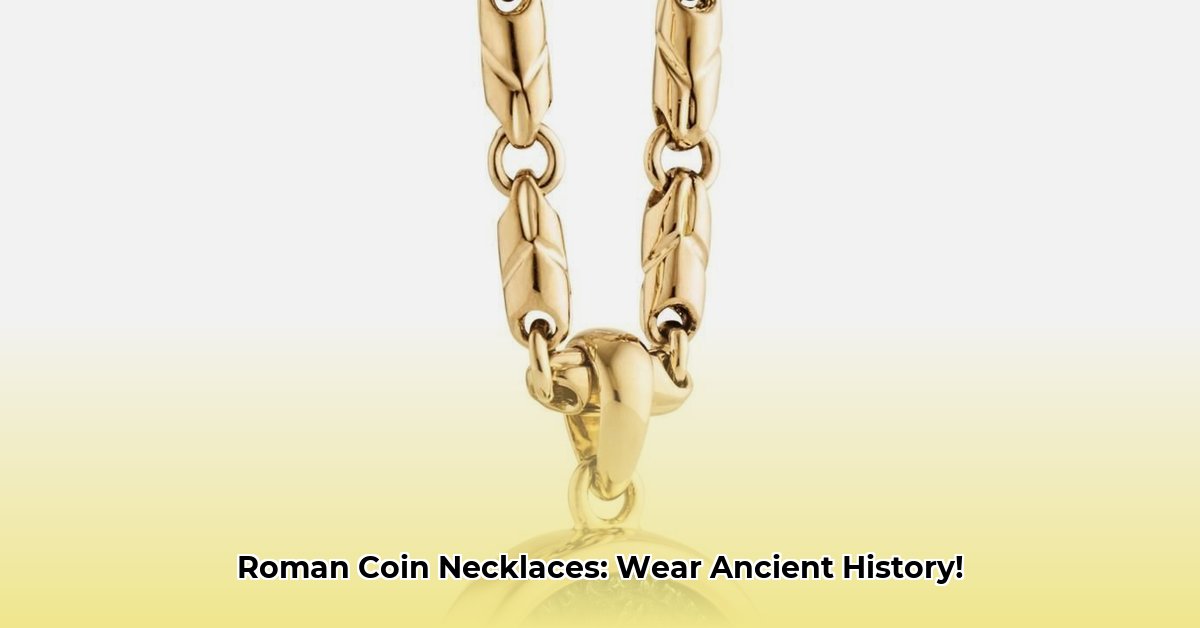
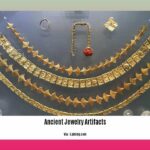
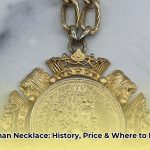
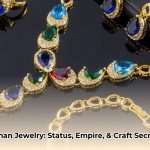
![Unlock Riches: Ancient Roman Gold Coins Value Guide [2024 Reference] + Expert Tips ancient_roman_gold_coins_edited](https://www.lolaapp.com/wp-content/uploads/2025/08/ancient_roman_gold_coins_edited-150x150.jpg)
